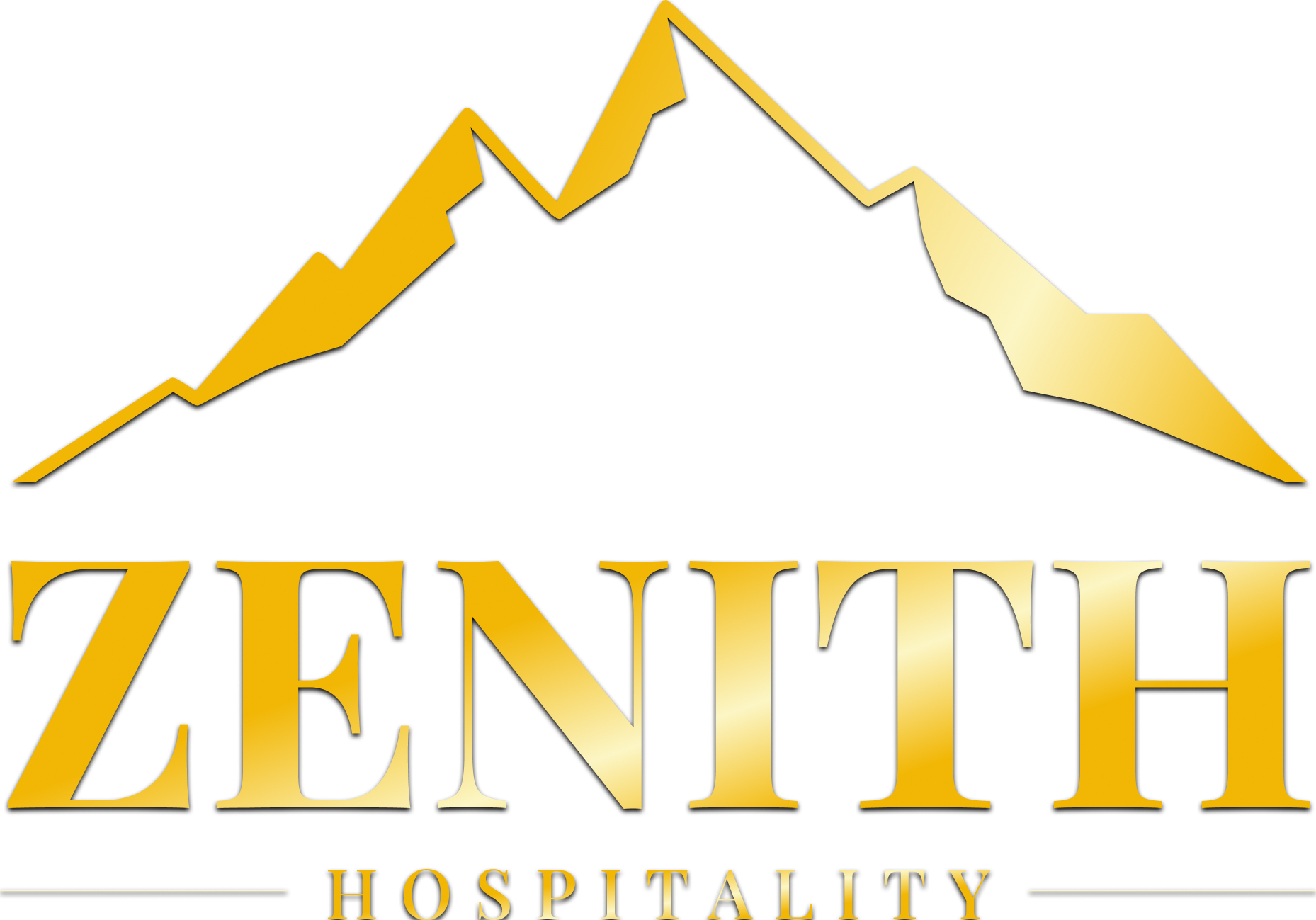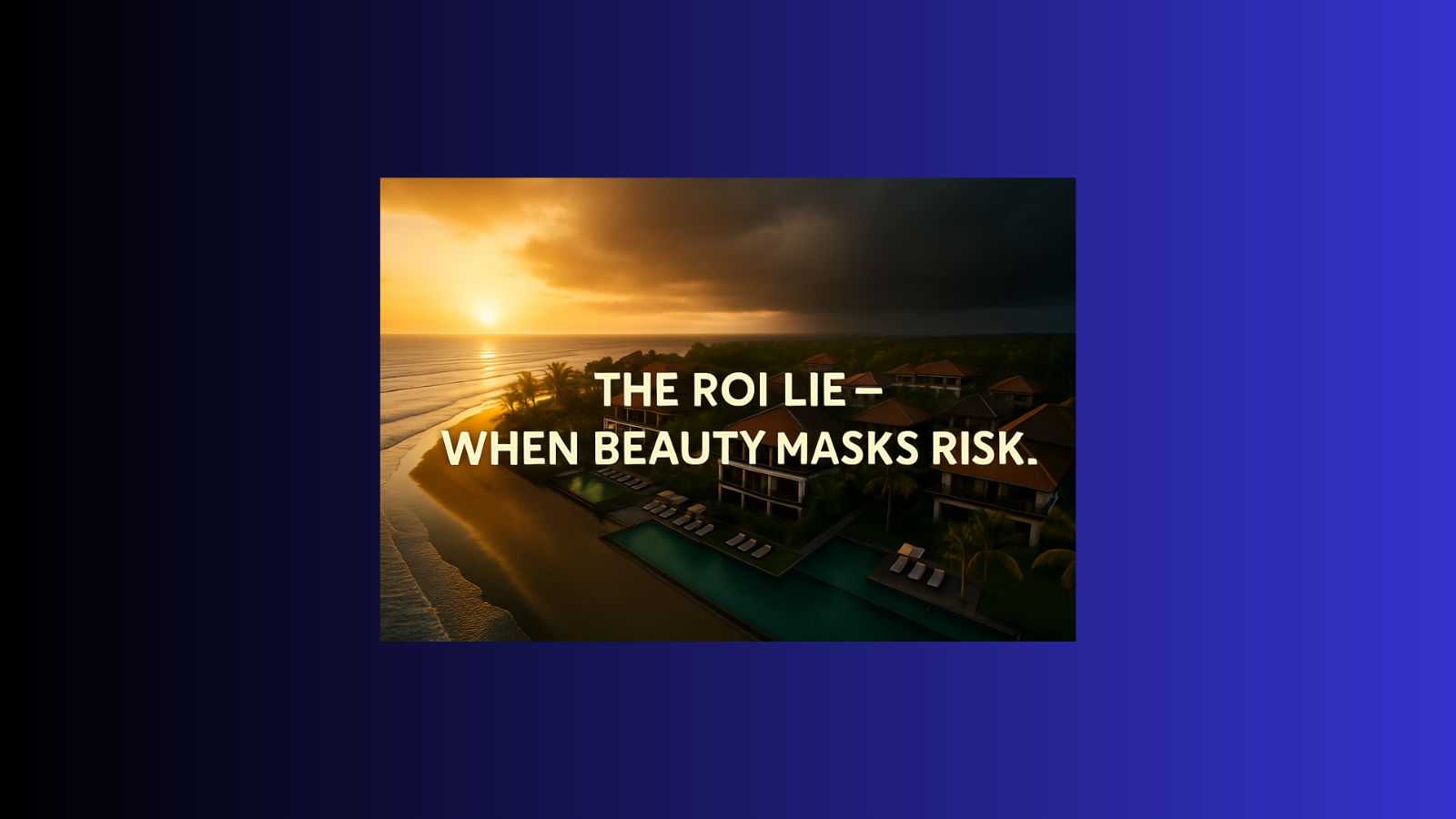Why Most Hospitality ROI in Southeast Asia Is Built on Sand
Hospitality ROI in Southeast Asia often looks dazzling on paper — 15%, 18%, even 22%. Yet the reality tells a different story. Most ROI models across Bali, Lombok, and Sumba rely on over-optimistic revenue forecasts, underestimated operating costs, and zero stress testing.
In short: too many investors buy the dream, not the data.
What This Article Delivers
This report deconstructs why projections collapse and how Zenith Hospitality Global builds resilient ROI models that withstand market volatility. You’ll see cost breakdowns, realistic assumptions, and a framework sophisticated investors can trust.
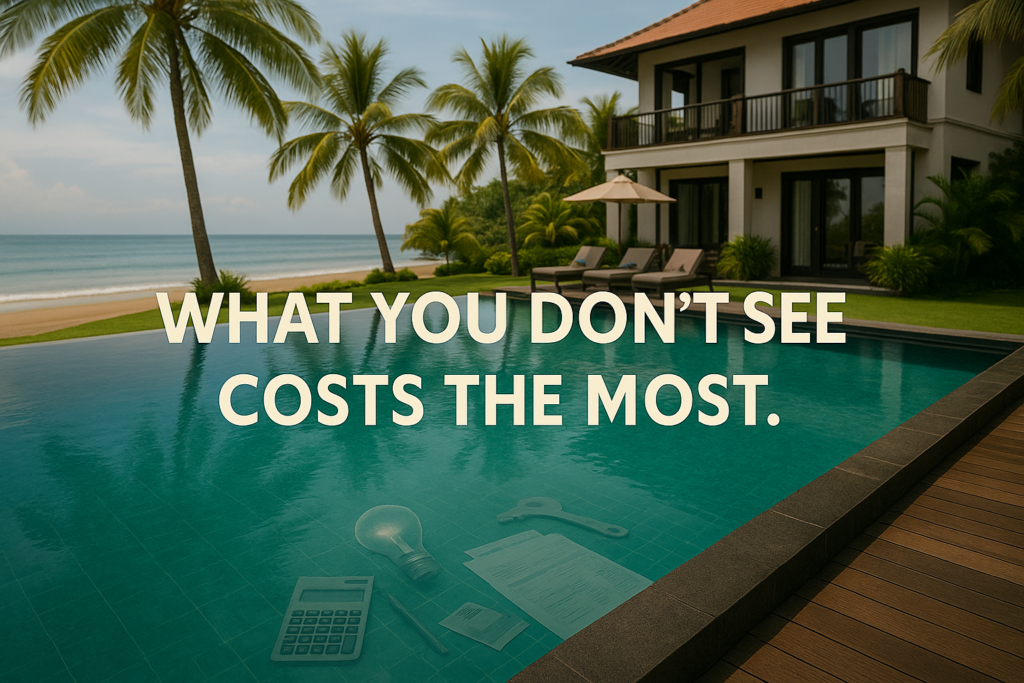
Why Do ROI Projections in Bali, Lombok & Sumba Mislead Hospitality Investors?
Typical sales decks promise 80 % occupancy and $250 ADR — a tempting story for anyone exploring hospitality investment in Indonesia.
Reality check:
- Stabilized occupancy for premium villas = 55–65 %.
- Operating costs = 40–50 % of gross revenue.
- True net ROI = 6–9 %, not 15–20 %.
According to Zenith Hospitality Global’s 2025 internal analysis, fewer than 30 % of boutique properties in South Bali reach their promised ROI within three years.
In short: Most ROI calculators are sales tools — not financial instruments.
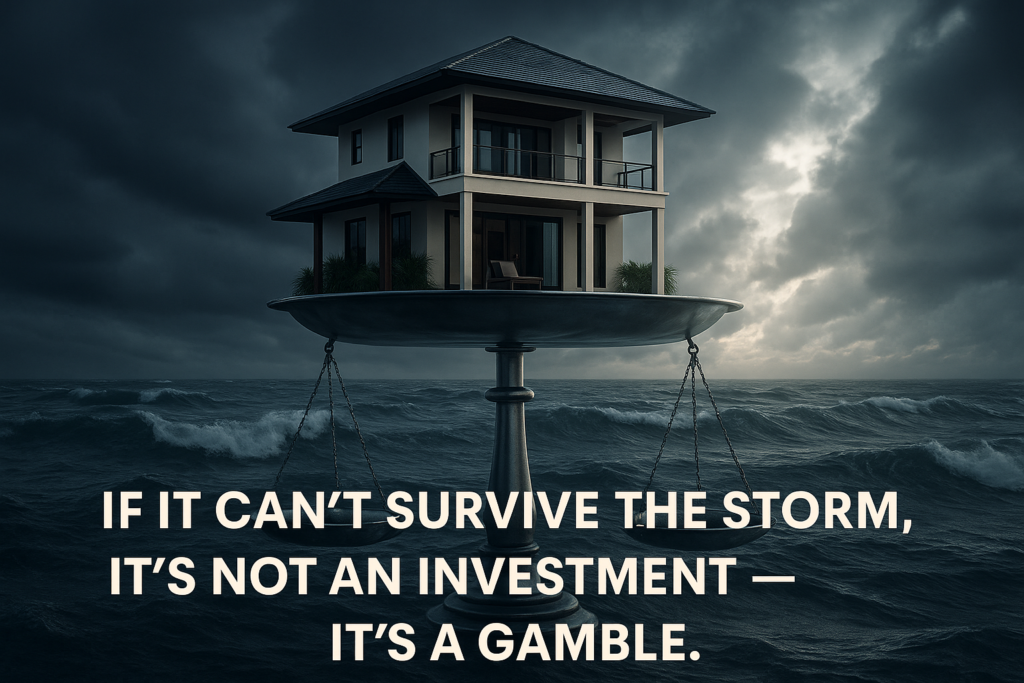
How Can Investors in Indonesia Avoid Flawed ROI Forecasts?
1. Unrealistic Revenue Forecasts
Developers assume full-year peak performance, ignoring ramp-up periods and review-driven pricing. Even in Seminyak or Canggu, new villas need 12–18 months to stabilize.
2. Hidden Operational Costs
Staffing, maintenance, utilities, and management fees erode profits.
Tropical humidity alone adds 8–10 % annual maintenance costs.
A villa grossing $120 k may net only $65 k after OPEX — ROI cut in half.
3. Currency Volatility
Investors earning in IDR but reporting in USD/EUR face exchange risk.
In April 2025 the Rupiah hit 17 000 / USD, its weakest in years, reducing USD returns by ≈ 10 %.
(USD/IDR long-term chart)
4. Market Shocks
From Mount Agung (2017) to COVID-19, occupancy has plunged to near-zero.
Robust ROI modeling in hospitality projects must simulate such “black swan” years.
What Can Bali and Lombok Learn about Hospitality ROI in Southeast Asia from Western Models?
Western markets build risk premiums and stress tests into every investment.
Typical U.S. hotel cap rate = 7–9 %, achieved through data, not hype.
They plan for:
- Economic cycles every 8–10 years (global tourism cycles)
- Recession scenarios (–20 % RevPAR)
- Debt-service coverage stress tests ≥ 1.3×
In summary: Western investors plan for turbulence. Southeast Asian marketers pretend it won’t happen.
How Zenith Builds Realistic ROI Forecasts for Hospitality Projects
Zenith Hospitality Global applies institutional-grade rigor through five pillars that protect ROI for investors across Bali hotel ROI and Lombok villa returns portfolios:
1. Data-Driven Baselines
Benchmarked with real market data from Bali, Lombok, and Sumba using
WTTC Indonesia country factsheet
and Statistics Indonesia visitor-arrivals 2024 (EN).
2. Full Cost Transparency
Includes management, staff, maintenance reserves, utilities, marketing, insurance, and taxation — focusing on net, not gross, ROI.
3. Sensitivity Analysis (Stress Testing Hospitality Projects)
Each variable (occupancy, ADR, OPEX) tested ± 20 %.
| Variable | Base | –10 % | +10 % |
|---|---|---|---|
| Occupancy | 65 % | 58.5 % → ROI 6.1 % | 71.5 % → ROI 9.3 % |
| ADR | $220 | $198 → ROI 6.4 % | $242 → ROI 9.1 % |
| OPEX | $60 k | $66 k → ROI 6.0 % | $54 k → ROI 9.4 % |
4. Stress Testing Extreme Scenarios
Simulates pandemics, currency shocks, and seasonal downturns to measure cash-flow resilience.
5. Transparent Reporting
Forecast vs actual dashboards and quarterly variance reviews ensure accountability.
In short: If your ROI model can’t survive a bad year, it’s not an investment — it’s a gamble.
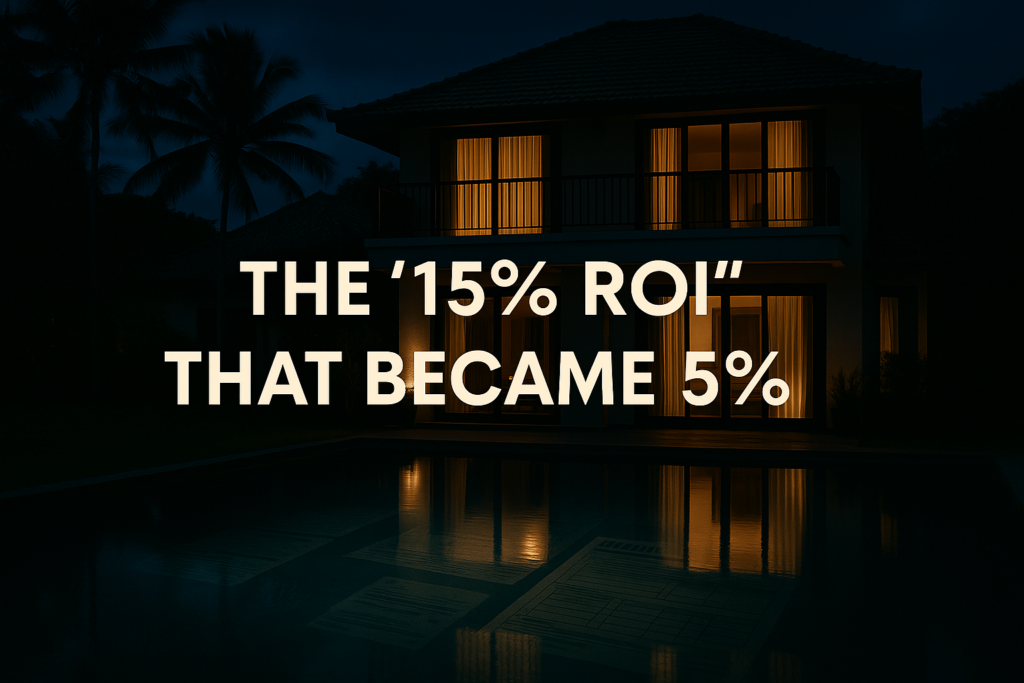
Case Study: The “15 % ROI” That Became 5 %
A Bali developer marketed guaranteed 15 % returns. By 2024, occupancy fell to 48 %; repairs and energy costs doubled. Actual ROI = 5.2 %.
Zenith’s audit found missing: local tax (10 %), maintenance (7 %), commissions (22 %), low-season discounts (–15 %).
Lesson: Transparency is the strongest form of risk management.
Six-Step Framework for Building Realistic Hospitality ROI Models in Southeast Asia
- Start conservative (50–60 % occupancy year one).
- Separate gross vs net ROI.
- Model a downturn year.
- Include ± 15 % currency swing.
- Benchmark locally (Indonesia tourism receipts — World Bank DataBank).
- Review quarterly and adapt.
Zenith Hospitality Global’s 2025 review shows stress-tested projects achieved 32 % higher ROI stability over three years.

Micro-Summary
Most hospitality ROI in Southeast Asia projections fail because they assume perfection.
Real success demands data, discipline, and downside planning.
Related Insights from Zenith Hospitality Global
- Lombok Tourism Growth Strategy – Sustainable tourism as long-term ROI engine.
- Managing Destination Overcrowding in Bali – Why regulation protects returns.
- Navigating Bali’s Licensing Maze – Compliance as an ROI safeguard.
Further Reading & External References
- UN Tourism Data Dashboard — Global & regional performance snapshots.
- World Bank — International tourism, receipts (Indonesia) — DataBank
- WTTC — Indonesia Economic Impact Factsheet
- XE — USD/IDR Exchange Rate Chart
- Statistics Indonesia (BPS) — International Visitor Arrivals 2024 (EN)
Summary Takeaways
- Most ROI projections ignore operational realities.
- Hidden costs and currency risk halve true returns.
- Western markets model risk; Southeast Asia markets hope.
- Zenith’s five-pillar method builds resilient ROI forecasts.
- Data and discipline outperform optimism every time.
FAQ
1. Why do ROI models in Bali and Lombok often fail investors?
They rely on idealized revenue and exclude key costs like maintenance and taxes.
2. What’s a realistic ROI for Bali hotels or Lombok villas?
About 6–9 % net once stabilized.
3. How can investors calculate realistic ROI forecasts?
Run stress testing, factor currency, and benchmark against verified market data.
4. What does Zenith’s stress testing cover?
Occupancy drops, ADR swings, inflation, and event-driven downturns.
5. How can investors verify ROI accuracy?
Request full OPEX disclosure and compare assumptions to market data.
Call to Action
If you’re evaluating a hospitality project in Bali, Lombok, or Sumba, Zenith Hospitality Global provides ROI audits, financial modeling, and pre-investment due diligence tailored to local market realities.
👉 Book a consultation and build models that survive — and thrive.
